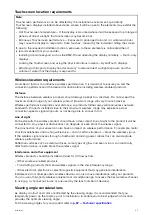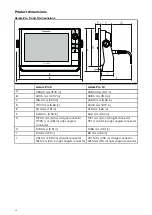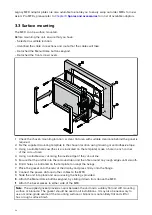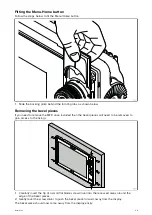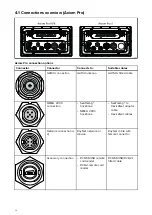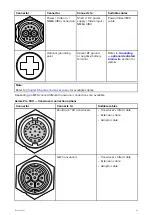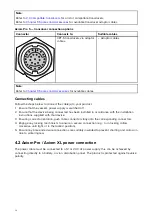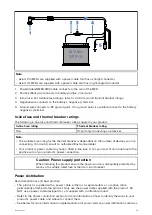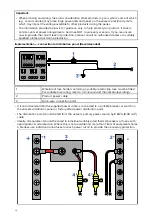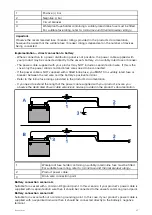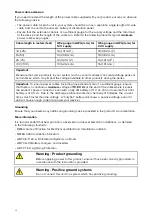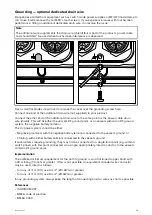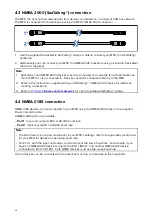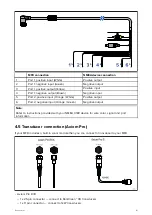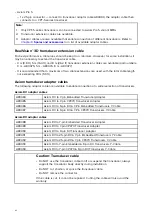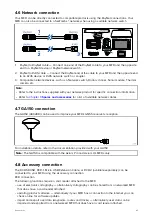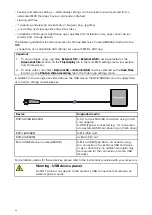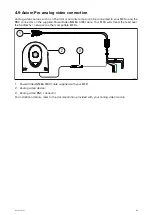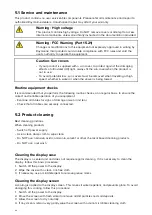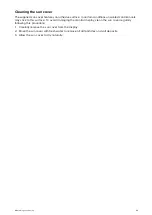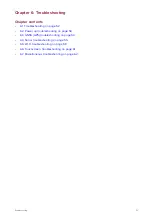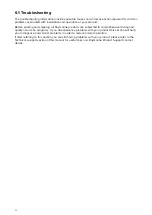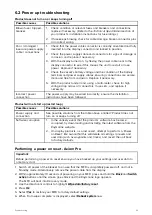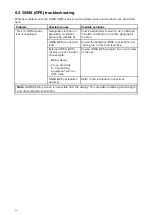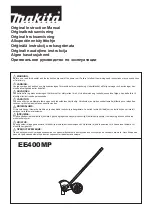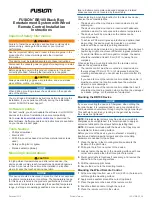
Grounding — optional dedicated drain wire
Frequencies emitted from equipment such as switch mode power supplies or MF/HF transmitters etc.
can cause interference with your MFD’s touchscreen. If you experience issues with touchscreen
performance, fitting an additional dedicated drain wire can resolve the issue.
Note:
The additional wire supplements the drain wire (shield) that is part of the product’s power cable
and should ONLY be used when touchscreen interference is observed.
Use a small flat blade screw driver to remove the cover over the grounding screw hole.
Connect one end of the additional drain wire (not supplied) to your product.
Connect the other end of the additional drain wire to the same point as the power cable drain
wire (shield). This will be either the vessel's RF ground point, or on vessels without an RF ground
system, the negative battery terminal.
The dc power system should be either:
• Negative grounded, with the negative battery terminal connected to the vessel's ground; or
• Floating, with neither battery terminal connected to the vessel's ground.
If several items require grounding, they may first be connected to a single local point (e.g. within a
switch panel), with this point connected via a single, appropriately-rated conductor, to the vessel’s
common RF ground point.
Implementation
The preferred minimum requirement for the path to ground is via a flat tinned copper braid, with
a 30 A rating (1/4 inch) or greater. If this is not possible, an equivalent stranded wire conductor
may be used, rated as follows:
• for runs of <1 m (3 ft), use 6 mm
2
(#10 AWG) or greater.
• for runs of >1 m (3 ft), use 8 mm
2
(#8 AWG) or greater.
In any grounding system, always keep the length of connecting braid or wires as short as possible.
References
• ISO10133/13297
• BMEA code of practice
• NMEA 0400
39

